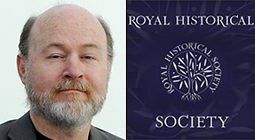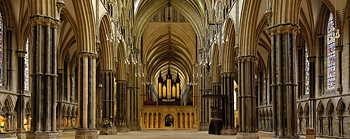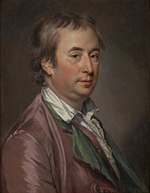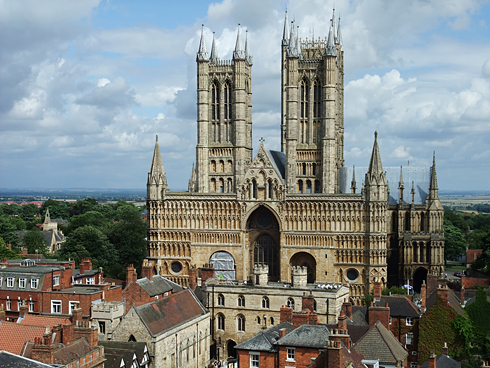Hudds prof elected fellow of RHS
Wed, 24 Apr 2013 13:38:00 BST
Architecture professor draws deeply on the past as Fellow of the Royal Historical Society
 NICHOLAS Temple (pictured) is Professor of Architecture at the University of Huddersfield. But his recent election as a Fellow of the Royal Historical Society is perfectly logical, in view of the inter-disciplinary nature of his work, which often draws deeply on the past.
NICHOLAS Temple (pictured) is Professor of Architecture at the University of Huddersfield. But his recent election as a Fellow of the Royal Historical Society is perfectly logical, in view of the inter-disciplinary nature of his work, which often draws deeply on the past.
“I certainly have a strong historical emphasis in my research, through the years of work I have carried out in Rome, but with other design projects too,” he says.
This research includes recent work on Lincoln Cathedral (interior pictured below), examining its architecture and the symbolic meanings of its sacred spaces. He concentrated on a period in the thirteenth century, when the bishop was Robert Grosseteste, sometimes described as the father of British science. The project will result in an edited book, to be published shortly by Ashgate Press.
 Professor Temple is also completing research for a book dealing with the 18th century architect William Chambers (pictured below) and the extent to which he was influenced by Oriental culture while travelling in Italy. This research earned Professor Temple a four-month senior Rome Fellowship, from April to July 2012, at the British School at Rome (BSR), awarded by the Yale-based Paul Mellon Trust.
Professor Temple is also completing research for a book dealing with the 18th century architect William Chambers (pictured below) and the extent to which he was influenced by Oriental culture while travelling in Italy. This research earned Professor Temple a four-month senior Rome Fellowship, from April to July 2012, at the British School at Rome (BSR), awarded by the Yale-based Paul Mellon Trust.
This follows a long association with Italy, and Rome in particular, which began when Professor Temple was awarded a Rome Scholarship at the BSR in the late 1980s.
 The Royal Historical Society Fellowship came after he was nominated by two colleagues, including the University of Huddersfield’s Head of History, Dr Pat Cullum – a FRHS herself. Then a portfolio of his research outputs was reviewed by an RHS panel before Professor Temple was elected to a fellowship.
The Royal Historical Society Fellowship came after he was nominated by two colleagues, including the University of Huddersfield’s Head of History, Dr Pat Cullum – a FRHS herself. Then a portfolio of his research outputs was reviewed by an RHS panel before Professor Temple was elected to a fellowship.
“I don’t see history as an isolated topic,” said Professor Temple, “because I am an architect by training, I see it as having relevance to contemporary architectural practise.”
He is currently assembling two major research projects. One – collaborative and inter-disciplinary – will examine cultural exchanges between Rome and China in the 17th and 18th centuries; the second will look at the evolution of European festivals and their urban settings.
Professor Temple is also the co-editor of a recently published book, entitled Architecture and Justice: Judicial Meanings in the Public Realm” (Ashgate). Derived from the proceedings of an international academic conference, the book has contributions from leading scholars in the fields of criminology, international law, philosophy, geography and architectural history, who examine the interrelationships between architecture and justice from both contemporary and historical contexts.
(Pictured below is the Lincoln Cathedral).








